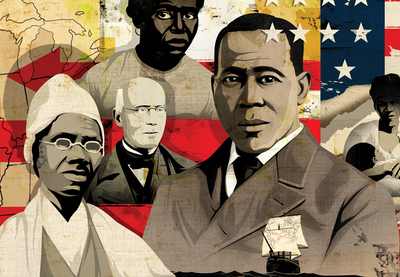Students will know that the United States was founded on protecting the economic interests of white, Christian men who owned property. In the process, it protected the institution of slavery.
What Else Should My Students Know?
17.A Twelve presidents, including the author of the Declaration of Independence, and the “Father of the Constitution,” enslaved people.
17.B Slavery was politically, socially and economically central to the founding of the United States of America.
17.C The Constitution provided many protections for slavery.
17.D Many enslaved people were inspired by the idea of freedom and fought on both sides of the Revolutionary War. Some were forced to fight. Others chose to fight, hoping that they would be freed afterward.
How Can I Teach This?
- Students should learn that many thousands of Africans, both freed and those who escaped from slavery, fought in the Revolutionary War on both sides because they hoped for freedom. Students can also learn about the Rhode Island “Black Regiment,” made up of people of color, including Indigenous people, who received their freedom in exchange for fighting in the Revolution.
- Students can research the active roles that many historical figures in U.S. history played in maintaining slavery. Many historic homes of presidents provide resources to learn about their communities of enslaved people, including Thomas Jefferson’s Monticello, James Madison's Montpelier and George Washington’s Mount Vernon.
- Reading Never Caught: The Story of Ona Judge and the story “Hercules’ Daughter” will humanize the people whom George Washington enslaved.
- Learning more about how large estates like Montpelier were dependent on enslaved labor will help students to understand that the “founding fathers” were able to spend time thinking and writing because they did not have to work on the farm. Students should learn that their exploitation of others allowed them to accrue wealth and build political status, enabling them to become the “founding fathers.” Slavery didn’t just free these men and women to engage in other activities; plantation management and productivity of slaves (through punishment and coercion and industrialization of the labor of enslaved people) were major considerations, values and preoccupations for them.
- Students should know the circumstances around the Constitution’s creation, including the conflicts surrounding its wording. They need to know that the Constitution was a compromise which had to satisfy enslavers or else it would not be accepted. They should learn about the ways that the Constitution protected slavery, including the Three-Fifths Compromise, the Fugitive Slave Clause and the agreement not to interfere with the slave trade for 20 years.
